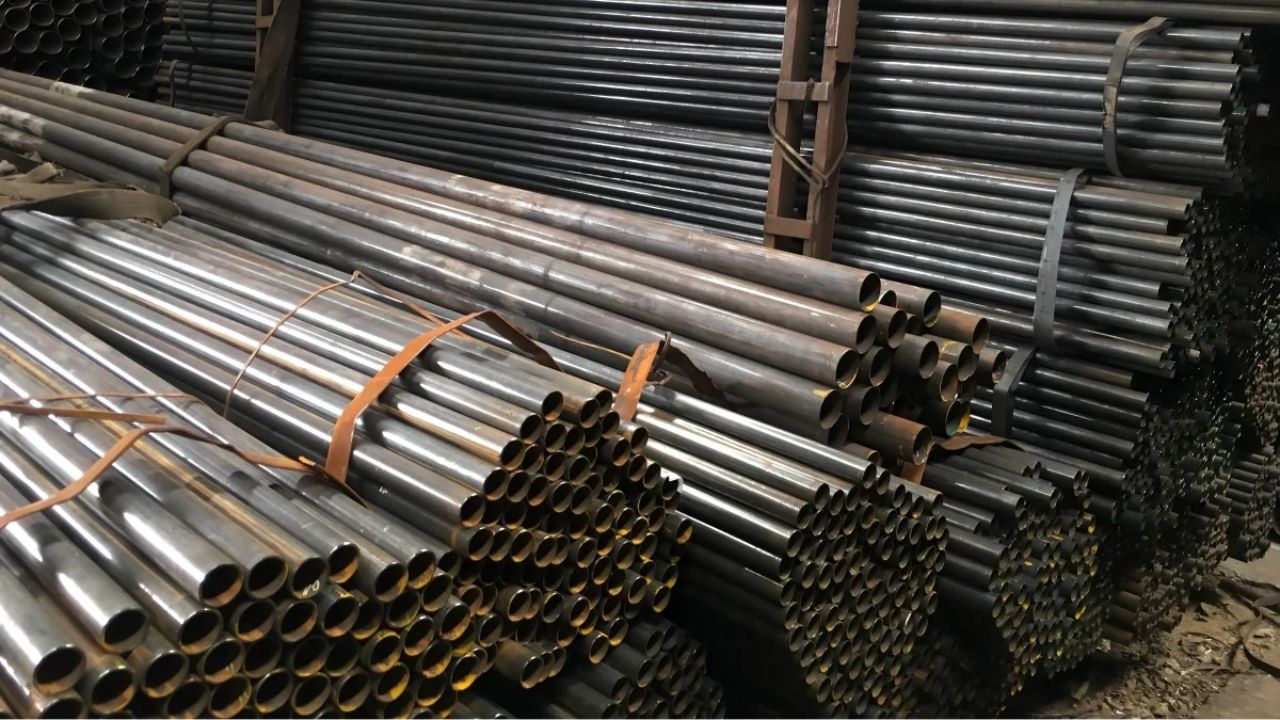The ASTM A214 pipes have gained a good reputation in areas where the use of heat transfer equipment is intensive in industries, which include power generation, petrochemical, and HVAC. They meet the design, material, and manufacturing requirements that are outstanding in the heat exchangers and condensers. The material of these pipes is produced according to the ASTM A214 standard, which means the exceptional quality requirements of dimensional precision, mechanical properties, and environmental stress resistance. PandaPipe is a company of more than 25 years specializing in the manufacture of steel pipe with ASTM A214 designations carefully designed to provide the best possible thermal conductivity, strength, and life span.
Heat Transfer Manufacturing Excellence
The ever-popular ASTM A214 pipes are made under the electric resistance welding (ERW) process. Such production can be fast and consistent, with relatively few weld defects, so the pipes are especially suited to high-precision usage like heat exchangers. ERW technology allows one to have a smooth inner surface that is necessary to facilitate the flow of fluid and heat in the system. Also, ASTM A214 standard demands that desired pipes should possess a minimum wall thickness to ensure the transfer of heat, along with the preservation of integrity to bear the pressure.
PandaPipe takes advantage of the American Seamer high-frequency welding machines to produce the ASTM A214 pipes. This equipment provides increased quality and weld consistency, allowing the production of tubes that meet the high requirements of industrial heat exchangers. Detailed machining services, namely flaring, bending, expanding, and swaging, are also undertaken in the manufacturing process of the company to accommodate the specific configuration that may be needed in various heat exchanger systems.
Optimized Material Composition in Performance
Chemical makeup of the ASTM A214 pipes is critical insofar as the pipes' suitability in the thermo systems is concerned. A limit of 0.18% carbon is imposed, which contributes to increased weldability with reduced chances of being brittle. The Manganese content varies between 0.27 percent and 0.63 percent, with tenfold gains in tensile and toughness. Small amounts of phosphorus and sulfur are also not prohibited, and they must remain below 0.035%, but at the same time, the steel must have good structural integrity even after being exposed to long-term thermal cycling.
This well-measured chemical feature enables such pipes to have the best resistance to scaling and corrosion, which is vital in heat exchanger usage. Corrosion resistance is also increased by PandaPipe since surface non-mandatory additional treatment is available (oiling, varnishing, hot-dip galvanizing) to improve the service life of the pipes during aggressive conditions.
High Demand-Supporting Mechanical Properties
In heat exchangers, the pipes are subjected to a large amount of pressure and variable changes in heat; the pipes should not deform and fail under those conditions. Pipes ASTM A214 are created, taking into consideration mechanical strength. They provide enough tensile strength of at least 47 ksi (325 MPa) with a yield strength of at least 26 ksi (180 MPa) and an elongation of 35 percent or greater. These mechanical properties ensure that the pipes can endure load and mechanical pressure in the long run.
PandaPipe executes comprehensive quality assurance tests to check such properties as flattening performances, reverse flattening tests, flange tests, and hardness tests. These tests certify the fact that every batch of ASTM A214 pipes is capable of reliable operation under the defined working conditions that can be met in a heat exchanger system.
Dimensional Flexibility of Diverse System Designs
These ASTM A214 pipes come in a wide variety of sizes so that they can be used as required by the engineers. PandaPipe has the sizes of 3.2 mm to 76.2 mm in OD and 1.65 mm to 7 mm in the wall thickness. These dimensions give the designer the opportunity to choose pipes that exactly fit the thermal and mechanical requirements of their systems, regardless of whether they are compact residential facilities or extensive industrial condensers.
Pipe ends are also supported by the company in terms of offers, including customization in terms of square cut, plain, beveled, threaded, or socketed, and other methods of connecting pipes, like flanges, couplings, and welding. Such flexibility means that the ASTM A214 pipes can be installed in new and retrofit projects without any problems.
Conclusion
In conclusion, one can say that ASTM A214 pipes are definitely among the most optimal ones to be used when producing a heat exchanger since they are thoroughly produced, the chemical composition is usually well-balanced, their mechanical characteristics are remarkable, and their dimensions can simply be altered. With its high level of experience and sophisticated production technologies, the customers of PandaPipe are guaranteed to get ASTM A214 pipes that match and even surpass the needs of performance desired within the current uses of pipes in heat transfer.


